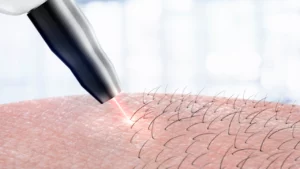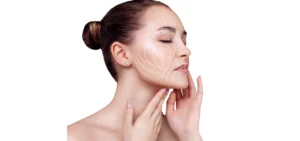You’ve slathered on every celebrity-approved cream and tried every foul-smelling home remedy under the roof, and your skin still doesn’t seem to cooperate? Don’t blame it on bad luck or genetics just yet.
The truth is, that when it comes to finding your daily skincare routine, there is no one size fits all formula. While cleanse tone and moisture is the generic mantra, let me tell you that the same may not ring true for all skin types.
Broadly speaking, there are three types of skin- dry, oily and combination. Luckily, you don’t need a 15 question quiz to determine your skin type-a quick look in the mirror will suffice.
If your skin tends to be prone to breakouts, and gets greasy and shiny around the cheeks, nose bridge, chin and forehead (an area known as the T-zone), you belong in the oily skin category.
People with dry skin usually experience dry patches and experience tautness (a tight feeling) immediately after washing their face. And those with combination skin usually tend to have an oily T-zone and normal to dry skin on the rest of the face.
Each of these skin categories requires different types of products, textures and even ingredients. Let’s get decoding.
Oily Skin
Yes, oily skin can be the most troublesome of the lot. It looks shiny in all the wrong ways, automatically makes you more prone to breakouts and causes make-up to bleed faster.
Excessive grease on the skin usually occurs when the sebaceous glands work overtime thanks to triggers like hormones, genetics or an unhealthy lifestyle. Naturally, your first instinct is to wash off the oil regularly and use an arsenal of products to correct this. But this is nothing but counterproductive.
When we wash our faces too often, we strip the skin of its natural oils. The skin tends to compensate for this by producing more oil, triggering the process of oil production and intolerable acne breakouts.
That being said, also has one major plus; excessive sebum on the skin means it is constantly smooth and moisturised. Thanks to this, the appearance of ageing signs like wrinkles and dry patches is naturally delayed.
While dealing with this skin type, remember less is more. Avoid using too many products and stick to the basics. A non-comedogenic face wash that’s packed with salicylic acid should be your best friend.
It will help cleanse deeply and reduce build up on the skin. Follow this with an antioxidant rich serum and sun block and you’re good to go. You can also try a gentle exfoliator once or twice a week to remove dead skin cells.
Pro tip: Look out for gel-based textures that are lightweight and don’t clog pores.
Dry Skin
If your skin feels as dry as the Saharan desert, make moisture your mantra.
Start with a creamy, but gentle (non-foaming) cleanser in the morning. Follow it up with a creamy serum or facial oil to boost moisture levels. You can also count on water-based moisturisers with ingredients like hyaluronic acid to keep your skin plump and healthy.
Follow this with SPF to protect your skin from the harmful sun rays and pollution.
Dry skin often causes make-up to flake and creates patches, so keep a facial spray handy to boost hydration without risking removal your make-up.
Pro Tip: Remember to keep your water intake levels in check-there’s only so much a cream can do, right?
Combination Skin
You might be the most blessed of the lot, but the rules still apply to you. Observe your skin to see if you T-zone is more oily than dry or vice versa. Once you’ve nailed the offender, focus on using products that suit that skin type.
If there’s a drastic difference between the T-Zone and other areas of the face, stick to oil-fighting products for the former and hydrating formulas for the rest.
Pro Tip: Try multi-masking- a face masking technique where you use masks that address different concerns on different parts of the face.










